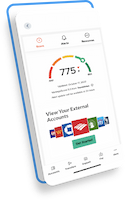
If you’ve been keeping up with us, you know that Quontic stands out in the world of neobanking. In part, we’re an outlier because we’re the only neobank that is helping low-income families achieve the dream of homeownership, with help from our status as a CDFI. But that’s only one side of the story.
Quontic uses its innovative deposit products to disrupt the neo-banking industry. Here’s how.
Our deposit products are not intended necessarily for our low-income consumers, but rather to drive deposits that we can then use to make mortgage loans to low-income households and in low-income communities.
One of those products that I’m particularly excited about is our high-interest checking account. It’s a checking account that pays 1% interest—ever heard of that? There’s almost nobody that offers any interest on a checking account, much less 1%. The rate we pay is more or less 20 times the interest that other banks (neobanks and big banks alike) pay on checking accounts. The reason we’re able to offer 1% is because it’s conditional. We ask that you make 15 qualifying purchases with your debit card each month. But when you consider that most consumers swipe their debit cards 38 times a month anyway, this isn’t a huge ask. This is how we earn interchange revenue, which we can then reroute back to our customers in the form of a high-interest rate.
By definition, we’re going to attract customers with higher deposit balances. (If you only keep the minimum balance, $500, in your checking account, that 1% interest rate is an inconsequential amount). But that’s good, because we can leverage those high balances when we lend to the subsets of our low-income customers.
We’re also the bank (neobank or other) that launched the nation’s first Bitcoin Rewards Checking account. Right now, we’re giving people back 1.5% of their eligible debit card purchases – in bitcoin, essentially for free. While it’s true that the Bitcoin market can be volatile, it generally has gone up over time. And, if Bitcoin rewards is not your cup of tea, our cash back checking account works the same way—it just pays cash back instead of bitcoin back. Regardless of the balance you keep, if you use your debit card for everyday expenses, you earn either bitcoin or cash back. And while Bitcoin rewards are unique, cash back, admittedly, is not the most unique product. There are probably hundreds of banks that offer it. But most of them aren’t neobanks.
So not only are we the neobank that’s helping low-income families, the neobank that spearheaded Bitcoin Rewards Checking (with other nation-firsts on the conveyor belt), but we’re also the neobank that pays our customers amongst the highest interest rate in the market for checking accounts.
The only question that remains is: who are we disrupting? Quontic’s innovative deposit products can compete head-to-head with three categories of banks.
First, we disrupt the traditional community banks that have brick and mortar branches. We decided to be ahead of the curve to go all-in on the digital market years ago. COVID just accelerated that trend. More and more banks are closing brick and mortar branches because they’re an expensive burden. Many banks are only now looking to create a digital strategy, which additionally involves a cultural overhaul. But guess who’s not spending money on physical branches? Guess who cemented a digital strategy early on? Digital banking in itself disrupts community banking.
Second, we’re disrupting big banking. Big banks control the vast majority of deposits in the market, but they pay very little to their customers. They’ve had a monopoly on the consumer for a long time. By not having brick and mortar branch costs, we can take those savings and pay a higher rate to customers online with higher interest rates. You’re seeing consumers migrate away from the big banks and join the fintechs and neobanks by the millions. I think that trend will continue, with Quontic leading the charge.
The third group we disrupt is the ‘type two’ neobanks that I talked about in my last blog post, like Chime, Current, Dave and others. Because they are not actually banks, they’re a mobile app that partners with an actual bank, they have to aggressively market to the consumer to open checking accounts. Sure, they have the bells and whistles like early paychecks or overdraft protections. But their profits come primarily from those interchange fees—the same ones that Quontic gives back to our customers with our innovative deposit products. This means that those type two neobanks are going to have to start lending money, brokering, as Robinhood did, or find other avenues from which to monetize its customers. Well, Quontic is already there. We’re the sustainable neobank.
We look like a fintech, we compete with community banks and big banks, and we operate as a neobank (one that is an actual bank). And on the lending side, we’re aiming to serve a broader market of low-income households. In order to do that, we need more deposits to become a bigger bank and to grow our foothold in the industry over the next few years. It’s only up from here.





